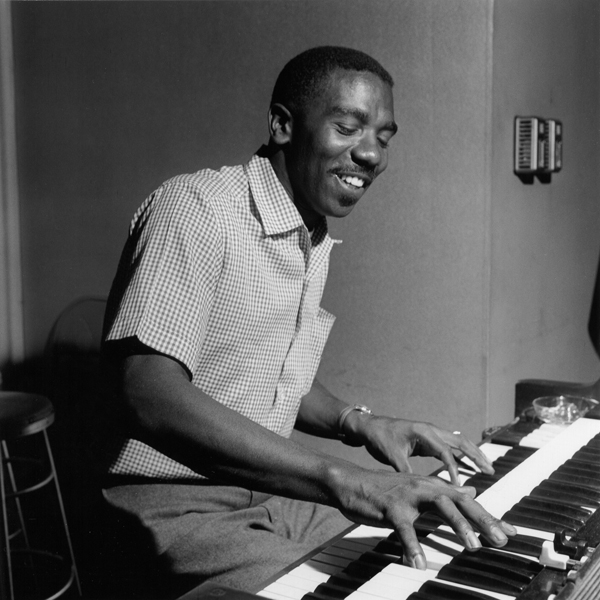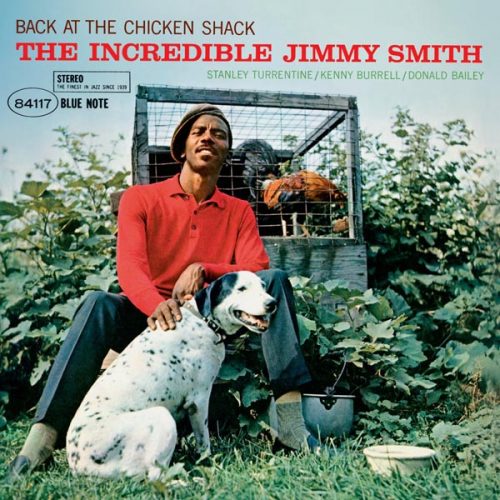August 9, 2021
When I interviewed Jimmy Smith at his home in Sacramento, Calif., in 1994 for a DownBeat feature, he was quick to expound on the virtues of the Hammond B-3 organ, which he singlehandedly took from relative obscurity (and church) into the jazz forefront, beginning with his 1956 debut A New Sound…A New Star…Jimmy Smith at the Organ, Volume 1. “The Hammond has body,” he said with messianic zeal. “It’s got depth—and resonance. It’s got clarity—and quality. And you can feel it. It’s not so much that you can hear it. It’s the feeling that’s important. You see, it’s like a drummer. You don’t want to hear him. You want to feel him…With the Hammond, you feel it in your bones.”
Jimmy’s gravelly voice rose in pitch and his excitability was ready to bubble over in the same way that he would erupt into a scintillating organ launch. He said, “Look at my hands. They’re shaking just thinking about playing. Don’t talk to me too much about my music ‘cause I get carried away. I go off. I completely go off.”
Before Jimmy came along and made the B-3 (played through Leslie speakers) a powerhouse thanks to copping licks from his Philadelphia neighbor Bud Powell (his takes on “Un Poco Loco” and “Glass Enclosure” freaked Bud out), the instrument had been largely known for Wild Bill Davis’s swing-oriented style. But Jimmy revolutionized—and blazed a trail for other organ players—the B-3, proving with percolating foot-pedal and left-hand bass lines and lightning-fast, blues-drenched right-hand runs that the instrument could scorch with bebop intensity. (The B3 was relegated to “miscellaneous instrument” status in DownBeat’s annual Critics Poll until 1964 when it got its own category thanks to Jimmy making it popular enough to spawn a whole crew of new organ players.)
Presented as “The Incredible Jimmy Smith,” the organist became a prolific fixture as a leader on the Blue Note roster into the early ’60s. Of all his recordings, one in particular that has become heralded as an essential is his 1960 gem, Back At The Chicken Shack, which made the cut for editor Robert Dimery’s book, 1001 Albums You Must Hear Before You Die.
Recorded during the same studio session that also produced the equally remarkable Midnight Special album, the funky, greasy soul-jazz Chicken Shack features a young but stellar trio of players: guitarist Kenny Burrell, tenor saxophonist Stanley Turrentine and drummer Donald Bailey who steadfastly keeps the beat throughout.
While a few years later in his career, Jimmy made a couple of memorable albums with guitarist Wes Montgomery, Kenny was his man on the six strings. Jimmy told me, referring to his 1993 Blue Note album The Master, which also featured Kenny, “On the new album it was like the old days. We were feeding each other, steady feeding the whole way through. Most guitarists you gotta tell ‘em how to play—you know, play a suspension here or make a chord larger there. But not Kenny. He knows what to do. He’s a master in his own right…Anytime we play, it’s the same thing. [We’re] just having conversations. I feed him and he feeds me…Look out! We bar nobody. It’s a marriage, and we’re not talking about divorce.”
Decades earlier, Jimmy and Kenny were still in the courting phase, but their improvisational interaction between each other on the original four-track Chicken Shack is alchemical. The same holds true for Stanley on tenor, who is actually showcased more than Kenny. The lyrical and catchy title track—composed by the leader with reference to Amos Milburn’s 1948 jump blues “Chicken Shack Boogie”—moves into a slow groove with Jimmy’s gurgling and purr-growl B-3 voicings and Kenny’s and Stanley’s simpatico solos. It’s soul musing at its best. Stanley takes the exquisite blues-fired solo lead on the swinging blues take on the Stanley Hammerstein II/Sigmund Romberg tune “When I Grow too Old to Dream,” which is followed half way through by Jimmy’s sweet but beefy stretch that makes you want to shout out.
Stanley’s mysterious and cooking “Minor Chant” gets treated to an uptempo ride with the composer belting out grooved tenor shouts followed by Jimmy’s passionate waves of B3 vibrations and Donald’s spanking solo break. The album ends with the relaxed Smith original “Messie Bessie” which features Kenny coolly playing off the rhythms Jimmy is laying down with his left hand. On the longest track on the album, Jimmy gets his chance to dance with a contagious exuberance of flame.
Not only was Chicken Shack a successful Smith outing, but it was also further testament to the power and glory of his instrument.
—Dan Ouellette







